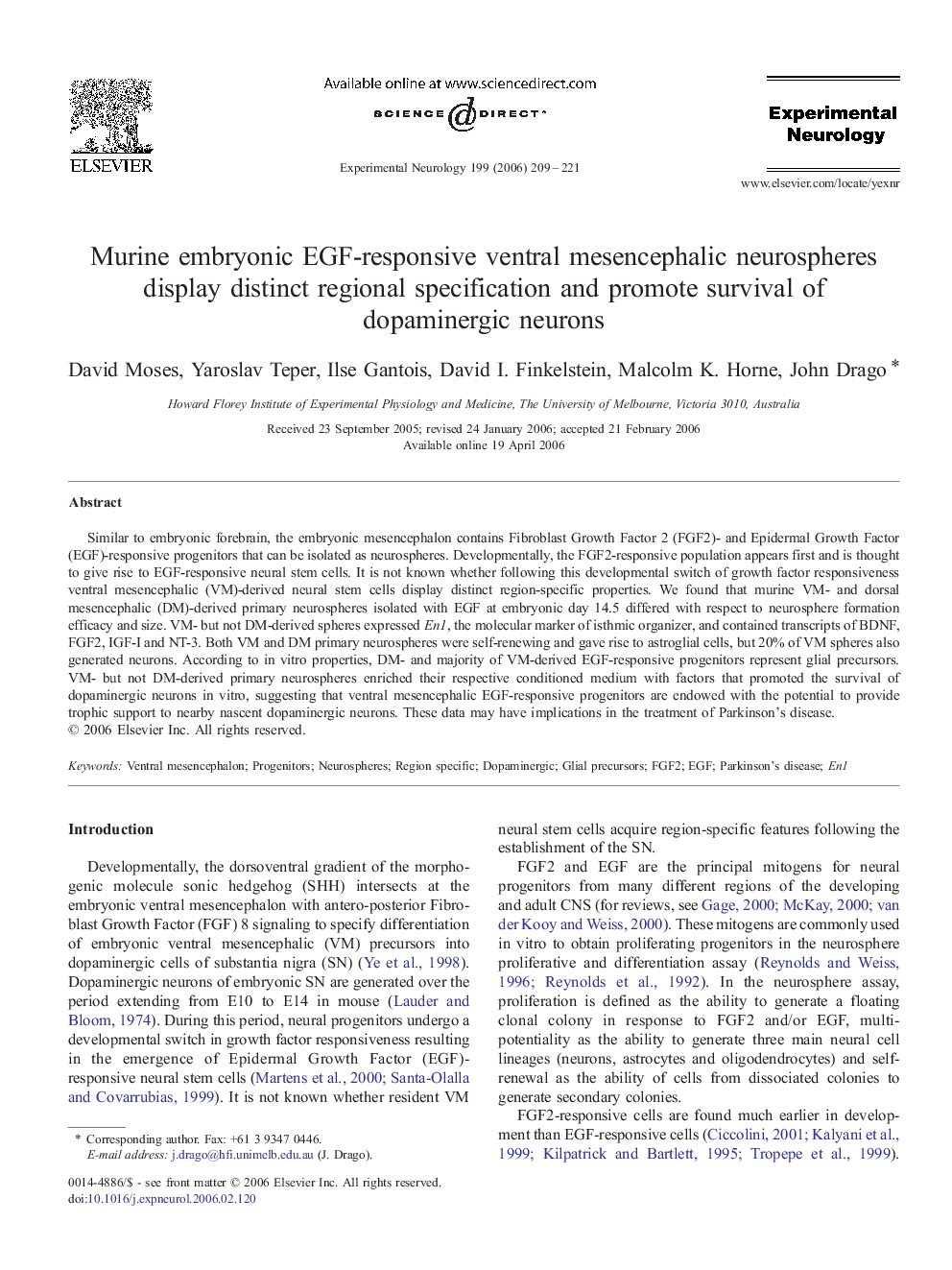| Article ID | Journal | Published Year | Pages | File Type |
|---|---|---|---|---|
| 3057616 | Experimental Neurology | 2006 | 13 Pages |
Similar to embryonic forebrain, the embryonic mesencephalon contains Fibroblast Growth Factor 2 (FGF2)- and Epidermal Growth Factor (EGF)-responsive progenitors that can be isolated as neurospheres. Developmentally, the FGF2-responsive population appears first and is thought to give rise to EGF-responsive neural stem cells. It is not known whether following this developmental switch of growth factor responsiveness ventral mesencephalic (VM)-derived neural stem cells display distinct region-specific properties. We found that murine VM- and dorsal mesencephalic (DM)-derived primary neurospheres isolated with EGF at embryonic day 14.5 differed with respect to neurosphere formation efficacy and size. VM- but not DM-derived spheres expressed En1, the molecular marker of isthmic organizer, and contained transcripts of BDNF, FGF2, IGF-I and NT-3. Both VM and DM primary neurospheres were self-renewing and gave rise to astroglial cells, but 20% of VM spheres also generated neurons. According to in vitro properties, DM- and majority of VM-derived EGF-responsive progenitors represent glial precursors. VM- but not DM-derived primary neurospheres enriched their respective conditioned medium with factors that promoted the survival of dopaminergic neurons in vitro, suggesting that ventral mesencephalic EGF-responsive progenitors are endowed with the potential to provide trophic support to nearby nascent dopaminergic neurons. These data may have implications in the treatment of Parkinson's disease.
